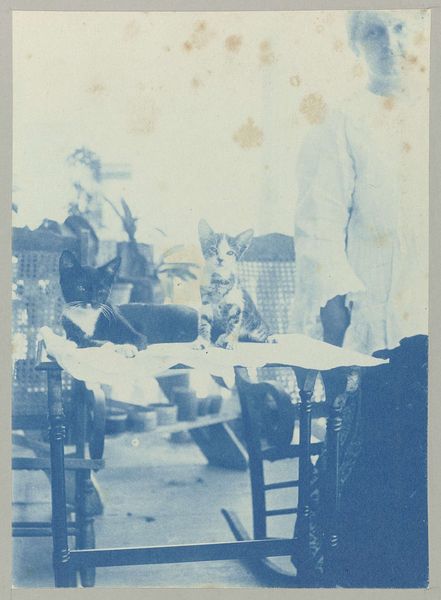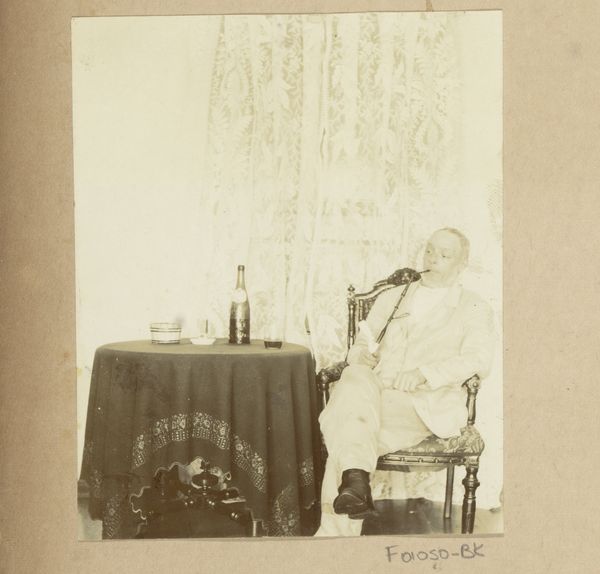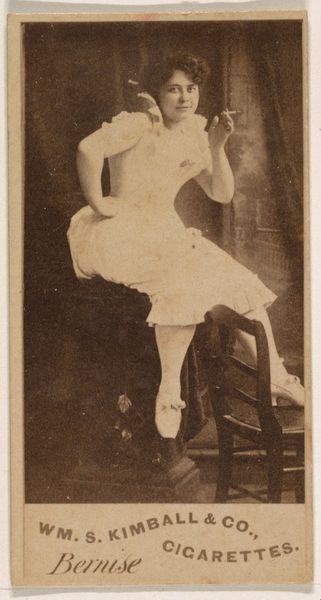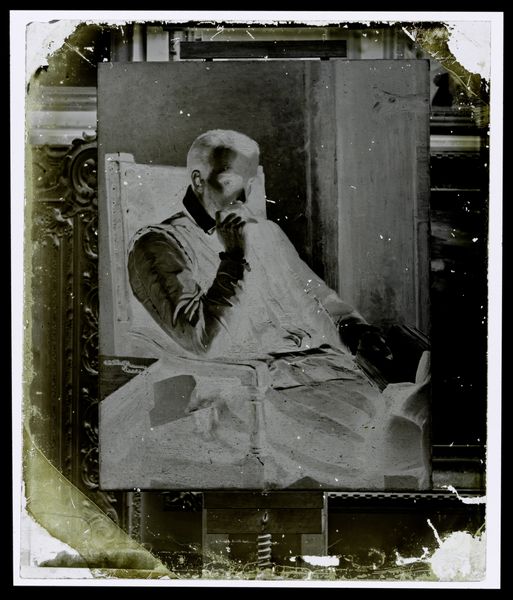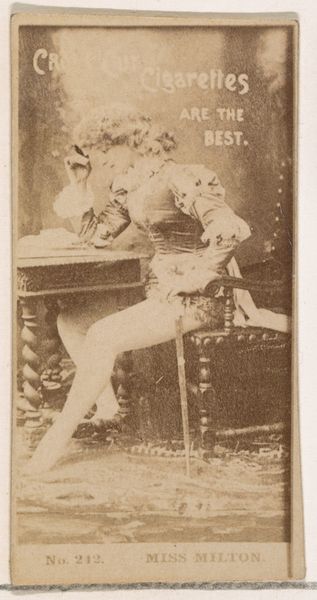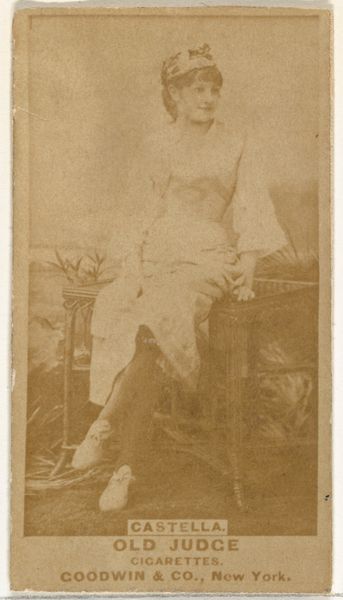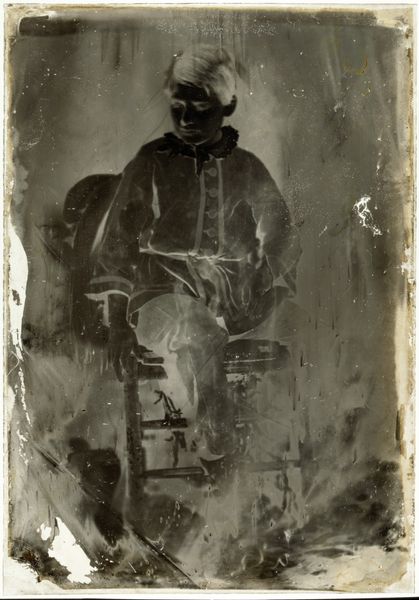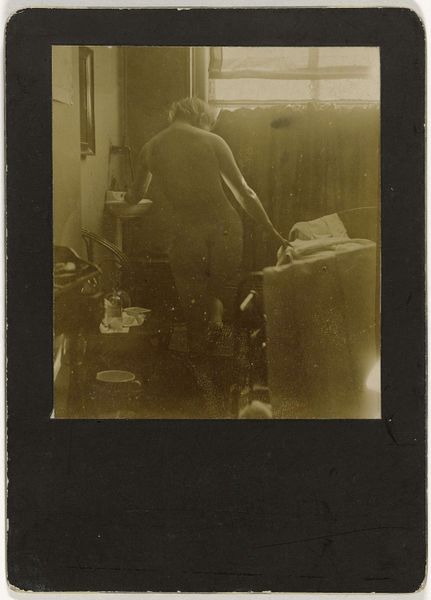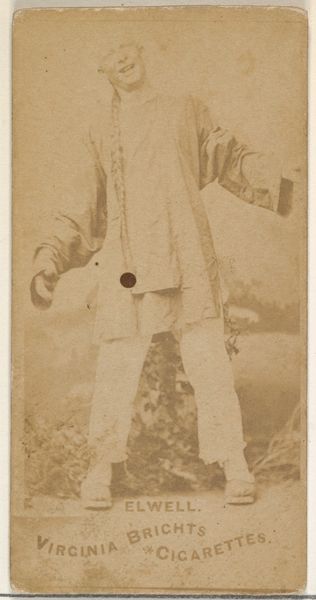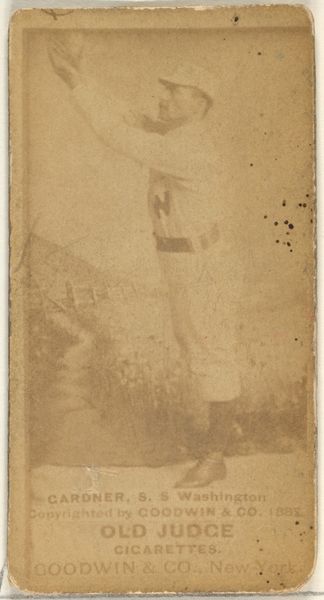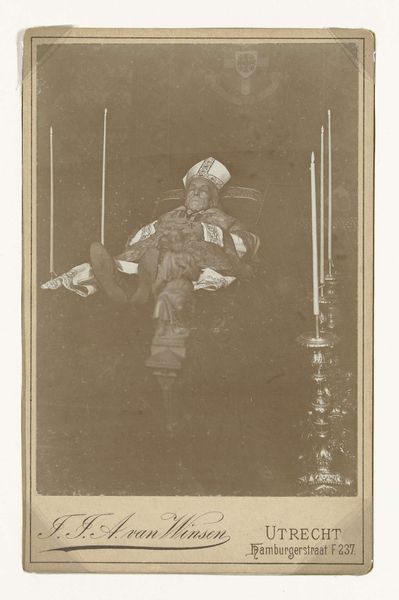
daguerreotype, photography
#
portrait
#
photo of handprinted image
#
toned paper
#
daguerreotype
#
photography
#
romanticism
Dimensions: height 116 mm, width 162 mm
Copyright: Rijks Museum: Open Domain
Curator: Let’s turn our attention to William Henry Fox Talbot’s "Portrait of Nicolaas Henneman," a daguerreotype from 1842. What strikes you about this image? Editor: Its ethereal quality is what grabs me first. It’s like a memory fading at the edges. And the sitter—Henneman—appears caught in a moment of quiet contemplation. The composition seems deliberately staged, and somehow emphasizes class divides. Curator: Precisely! Talbot captures Henneman, his former valet who became his photographic printer, with symbolic undertones. The glass and the jug might represent clarity and access, while his pose reflects the Victorian ideal of reflective industriousness. Editor: I can see that, particularly if Henneman's glass reflects enlightenment or inspiration derived from scientific advancement—linked, perhaps, to photography itself? It's worth noting the historical context: this was a period defined by hierarchical social relationships reflected within portraiture. Is there any tension here, or an acknowledgement of Henneman's changed role? Curator: The light in the image speaks to Talbot's romantic leanings, doesn’t it? His experiments tried to "fix a shadow." There’s a subtle alchemy to early photography that links it to ancient desires to capture and preserve the essence of life. Editor: Alchemy is right. Look at the detail—the uneven development creates a unique pattern. This element of chance seems counter to portraiture traditions which idealize, to elevate the subject in class status or appearance. It is more democratic in its approach, wouldn't you agree? Curator: It could be read either way. But that interplay is what gives the photograph resonance. Through it, we touch on the social dynamic of its time, Talbot's artistic inclinations, and Henneman’s transition—captured for posterity in light and shadow. Editor: Indeed. Looking closely, I see in this seemingly straightforward portrait layered social and historical meaning. It prompts deeper consideration. Curator: A testament to the enduring power of images, right? Editor: Absolutely. Images create new connections to our histories.
Comments
No comments
Be the first to comment and join the conversation on the ultimate creative platform.

